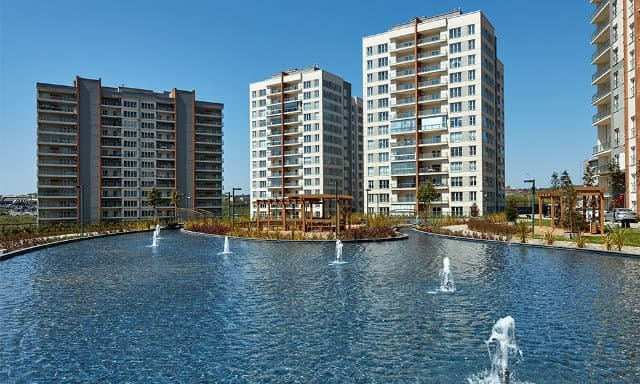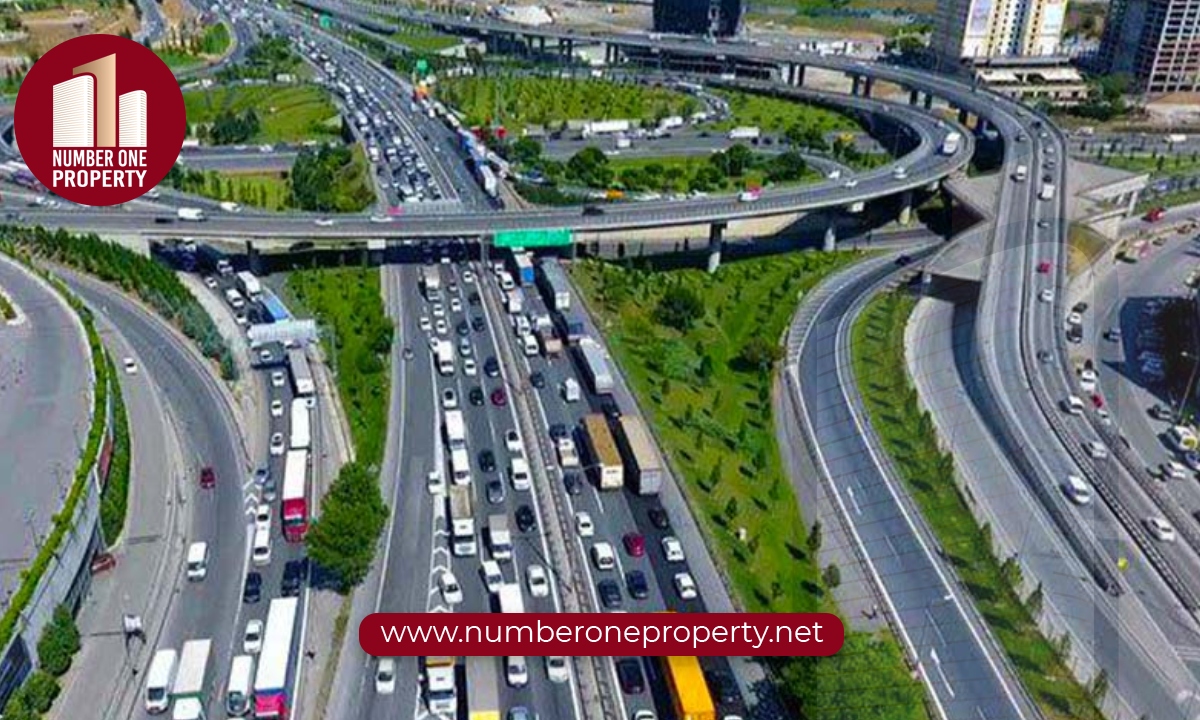The impact of highways on property values is a complex topic that has received attention in various studies and plays a significant role.
Such infrastructure affects those who directly use it and extends its benefits or detriments through changes in property values, making the importance of highways and their zoning implications a critical area of study for property owners living near freeways.
While freeway construction might initially seem detrimental to nearby properties, evidence suggests it tends to elevate property values near highways, albeit with a nuanced impact that varies from one property to another.
This guide delves into understanding the multifaceted relationship between transportation infrastructure, especially highways, and property values.
It explores varying case studies to shed light on how the impact of zoning on property values and the proximity to freeways influence regional economic landscapes.
Furthermore, it addresses the complexities and considerations essential in planning infrastructure that supports growth without negatively affecting the existing property values, thereby guiding future trends and potential developments in this area.
Understanding the Impact of Transportation Infrastructure on Property Values
Properties near transportation hubs, such as highways, subways, and bus lines, often experience increased value due to enhanced accessibility and greater demand.
Economic development is a crucial factor driving the positive correlation between transportation infrastructure and property values, reflecting the broader impacts of urban transit systems on real estate values and the corresponding external benefits.
This phenomenon is not isolated but relatively widespread, affecting various properties differently. Environmental considerations, including greenhouse gas emissions, are part of the broader impact of transportation infrastructure on property values, highlighting the importance of integrating these factors into transportation planning processes.
Here’s a breakdown of how proximity to transportation infrastructure impacts different property types:
Residential Properties and Real Estate Value:

Detached Single-Family Homes: Generally, these properties have a negative impact from being too close to freeways due to noise and pollution.
Multifamily Residential Developments (e.g., Condominiums): These properties often benefit from near transportation hubs, attracting residents who value accessibility.
Impact of Public Transportation: Properties and land values within half a mile of a fixed rail transit station outperformed their regional averages regarding value retention by 41.6% during the recession, showcasing the resilience and significant increase in land values of properties near quality public transportation infrastructure.
Commercial Properties: Experience a positive impact from proximity to highways and other transportation infrastructure, as accessibility attracts businesses and customers alike.
Factors Influencing Property Values:
Environmental Considerations: The green premium for properties in walkable areas with excellent public transit options reflects environmentally conscious markets’ prioritization of accessibility without needing personal vehicles.
Economic Worth: Improved accessibility attracts more businesses and employees, thereby increasing the area’s financial worth and, by extension, property values.
Externalities: While increased accessibility is a positive factor, negative externalities such as noise, pollution, and traffic can adversely affect property values. For instance, highway noise can decrease property values due to increased traffic, exhaust fumes, and light pollution.
Market Demographics: The millennial generation, which highly values public transportation, is becoming the dominant demographic in the workforce, further increasing demand for properties near transit hubs.
Hedonic price models estimate how environmental considerations and economic worth impact property values, highlighting the positive correlation between transit system availability and property values.
Another tool used in this analysis is a linear regression model. However, it may be less effective than spatial models in capturing the complex relationship between transportation infrastructure and property values.
Impact of Transportation Infrastructure on Property Values:
The relationship between transportation and real estate is significant, with properties near quality public transportation infrastructure being highly valued and resistant to economic downturns. This proximity can increase real estate prices, as spatial econometric models have shown the positive effects of transportation infrastructure on dwelling prices and rents in various locations.
New or improved transportation infrastructure can spark urban renewal in previously overlooked areas, leading to increased property development, enhanced amenities, and higher real estate values. The significant influence of such infrastructure projects on improving real estate value in urban renewal contexts is evident through the application of hedonic models, which estimate the impact of transit systems on property values.
The primary factor determining the negative impact on property values is regional traffic growth on major roads in the area rather than the presence of a freeway itself.
In summary, the impact of transportation infrastructure on property values is multifaceted and influenced by various factors, including the type of property, environmental considerations, economic worth, externalities, and market demographics.
Understanding these dynamics is crucial for property owners, investors, and policymakers.
Case Studies: Impact of Transportation Infrastructure on Property Values

In Istanbul, the strategic placement of commercial properties about transportation infrastructure illustrates the profound impact highways and public transit systems have on property values:
Istanbul Center: A Commercial Epicenter
Proximity to Transit Nodes: The heart of the city, where most bus and train lines converge, stands as a testament to the importance of accessibility for commercial success.
Impact of The light rail system enhances downtown’s connectivity, making it a more attractive location for businesses.
Iconic Landmarks: Downtown is not just a transit hub but also home to iconic landmarks, adding to its commercial appeal.
Highway Connectivity
Vast Network: Istanbul’s extensive highway system offers unparalleled access and transportation options, linking the city to more comprehensive markets.
Investment in Infrastructure: The city’s commitment to investing billions in highway reconstruction and infrastructure upgrades fuels the growth of the commercial real estate market.
Prime Real Estate: Established businesses tend to occupy locations near highways, underlining the value of such placements for commercial activity.
This case study underscores the symbiotic relationship between transportation infrastructure and commercial property values.
Highway development and accessibility, provided by public transit systems, facilitate ease of access and contribute significantly to the attractiveness and value of commercial properties in urban centers like Istanbul.
These observations align with broader real estate trends, highlighting the growing demand for properties near public transportation hubs due to their significant impact on urban development and property values.
This reflects the preferences of the millennial demographic and the strategic considerations for real estate developers and investors.
Transportation Research: Factors Influencing the Degree of Impact
Proximity and Property Type Impact:
Detached Single-Family Homes located near freeways experience a decrease in value due to concerns such as noise and pollution.
Multifamily residential development tends to increase in value when it is close to freeways, which is attributed to the demand for accessibility.
Commercial Properties: Generally benefit from freeway proximity, as accessibility is critical for businesses and customers.
Traffic and Noise Considerations:
Traffic Volume: The level of traffic on nearby significant roads significantly influences the negative impact on property values. Higher traffic volumes can lead to more noise, pollution, and congestion, detracting from residential appeal.
Noise Pollution Directly correlates with a decrease in property values. Properties closer to the source of highway noise are more adversely affected, underscoring the importance of subjective factors such as individual tolerance to noise.
Landlocked Properties: This may result from highway development, which reduces access and subsequently lowers market value.
Strategies and Market Responses:
Commuter Preferences: Individuals prioritizing quick freeway access for their daily commutes may be willing to pay a premium for such convenience, highlighting a market segment valuing time savings over tranquility.
Protective Measures: Implementing safety and noise mitigation measures, like fences and green walls, can help shield properties from the negative aspects of nearby highways, potentially increasing their appeal and value.
Market Adjustments: Empirical evidence suggests that factors such as the type of improvement, freeway proximity, and the timing of construction completion are critical in determining property values. This indicates that not all properties near highways are affected equally, and market values can adjust based on these variables.
This analysis underscores the complexity of how highways impact property values, with various factors such as property type, traffic volume, and noise playing significant roles.
Additionally, market responses and strategies like protective measures can mitigate some adverse effects, illustrating the nuanced relationship between highways and property values.
Ongoing transportation research into traffic, noise, and property type impacts further refines our understanding of how transportation infrastructure influences property values.
Challenges and Considerations in Infrastructure Planning
The Infrastructure Investment represents a significant step forward, with billions in new funding earmarked for infrastructure investments, including roads and bridges.
However, several challenges and considerations must be addressed to ensure the effective implementation of such large-scale projects.
Incorporating spatial econometric models and the spatial Durbin model can significantly enhance the accuracy of predictions regarding land use changes and transportation impacts by accounting for spatial dependencies and the complex interactions between different variables.
Furthermore, applying spatial models is crucial for capturing the dynamic interactions between land use and transportation development, offering insights into how infrastructure investments can shape urban growth and address planning challenges.
Travel Demand Modeling and Land Use:
Current travel demand models need help to accurately predict latent and induced travel demand, intermodal impacts, and the complex relationship between land use and transportation. This lack of precision can lead to suboptimal planning and resource allocation.
The interdependency between land use and transportation development is well-acknowledged, yet existing models fail to predict land-use changes that transportation improvements might trigger.
This gap highlights the need for more sophisticated modeling techniques to capture these dynamic interactions.
Institutional and Workforce Challenges:
Insufficient coordination between land use and transportation planning agencies has been a long-standing issue. This institutional misalignment impedes the development of cohesive and effective transportation strategies crucial for urban development and congestion management.
The transportation sector needs help attracting qualified personnel. Many students with technical backgrounds are drawn to fields offering higher salaries and quicker career progression, leaving a talent gap in transportation planning and infrastructure development.
Impact of COVID-19 and Future Funding Strategies:
The COVID-19 pandemic has profoundly impacted transport infrastructure, reducing urban mobility and disrupting global supply chains. These challenges have prompted governments worldwide to reevaluate their infrastructure spending plans.
For instance, G20 countries have announced over $US800 billion for transport infrastructure as part of their stimulus programs, aiming to drive transformative change and address critical issues like climate change, environmental sustainability, and income inequality.
Innovative funding and financing strategies are becoming increasingly important. Traditional funding sources, such as taxes, fees, and grants, may need to be revised for the ambitious projects envisioned.
Alternative mechanisms, including public-private partnerships, value capture, user charges, and bonds, offer viable paths to secure the necessary investment for future infrastructure projects.
These considerations emphasize the need for a strategic approach to infrastructure planning that incorporates advanced modeling techniques, fosters inter-agency collaboration, addresses workforce challenges, and explores innovative funding solutions.
By tackling these issues head-on, policymakers and planners can pave the way for infrastructure development that meets current needs and anticipates future challenges and opportunities.
Future Trends and Potential Developments
Real estate professionals are navigating a rapidly evolving landscape impacted by technological advancements and societal shifts.
Understanding these changes is crucial for advising clients on strategic investments and anticipating market trends. Key emerging trends include:
Autonomous Vehicles:

The rise of autonomous vehicles is expected to significantly alter transportation dynamics, potentially reducing the need for personal vehicle ownership.
This shift could impact the demand for residential properties with extensive parking facilities and reshape urban planning norms.
Expanded Bike-Share Programs:
Cities worldwide are expanding bike-share programs, promoting sustainable transportation, and reducing reliance on motor vehicles.
This trend enhances the appeal of properties near bike-share stations, as residents value the added convenience and reduced transportation costs.
Smart City Initiatives:

Innovative city initiatives aim to integrate technology into urban infrastructure, improving efficiency and quality of life.
Features such as intelligent traffic management systems, energy-efficient buildings, and enhanced public safety measures make certain areas more attractive to residents and businesses.
These developments are not isolated but interconnected, influencing each other and the real estate market. For instance, integrating autonomous vehicles and innovative city technologies could lead to more efficient use of urban spaces, affecting property values in previously underutilized areas.
Similarly, expanding bike-share programs may increase the desirability of properties in less accessible locations, provided they are within reach of these facilities.
Real estate professionals must stay informed about these trends to forecast shifts in the market effectively and advise clients on strategic investments.
Conclusion
Throughout this article, we have unraveled the complex interplay between highways and property values, underscoring the importance of strategic infrastructure planning and its nuanced impact on various property types.
From residential to commercial properties, the proximity to transportation infrastructure, particularly highways, has emerged as a fundamental factor influencing property value dynamics.
This exploration highlights the economic benefits of well-positioned properties and emphasizes the need for mindful infrastructure development to mitigate potential negative externalities such as noise and pollution.
The evolving transportation and infrastructure planning landscape presents challenges and opportunities as we look ahead.
The advent of autonomous vehicles, the expansion of bike-share programs, and innovative city initiatives are set to redefine urban living and, by extension, real estate values.
It is imperative for stakeholders—from policymakers to real estate professionals—to stay informed and adaptable to these changes.
By embracing innovative planning and financing strategies, we can ensure that infrastructure development continues to enhance property values and quality of life in our communities, bridging the gap between present needs and future aspirations.


